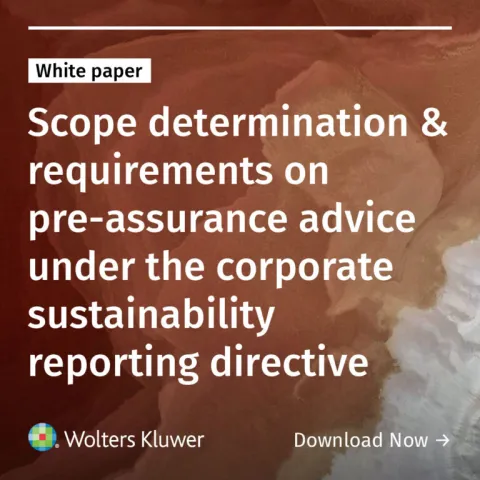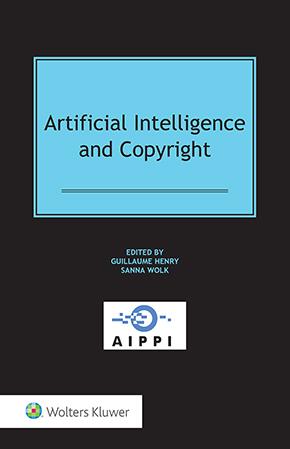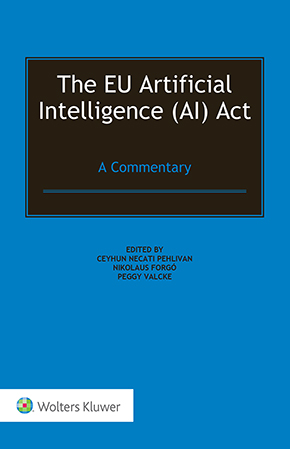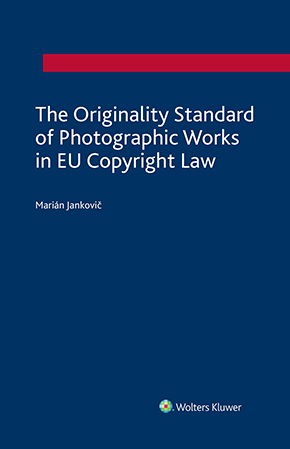Are the European TDM Exceptions Applicable to GenAI Training? Despite the Three-Step Test?
October 1, 2025
After the adoption of the AI Act (AIA), the matter seemed to have been settled. With regard to generative AI models (GenAI), Recital 105 AIA refers explicitly to the exceptions for text and data mining (TDM) in the 2019 Directive on Copyright in the Digital Single Market (CDSMD). Article 53(1)(c) AIA adds the obligation to observe opt-outs declared by copyright holders under Article 4(3) CDSMD. Quite clearly, the EU legislator assumed that the TDM exceptions, including the broad exemption of (commercial) TDM in Article 4(1) CDSMD, could be invoked for GenAI training.
Criticising this approach, Axel Voss stated in his June 2025 Draft Report on Copyright and GenAI for the JURI Committee (2025/2058(INI)) that “the reference to the CDSM Directive in the AI Act is inadequate and fails to provide an appropriate and proportionate solution.” The backdoor for declaring the TDM provisions inapplicable in GenAI training scenarios can be found in the CDSMD itself. Article 7(2) CDSMD refers to the “three-step test” in Article 5(5) of the 2001 Information Society Directive (ISD). According to this additional rule, the TDM exceptions in Articles 3 and 4 CDSMD are only applicable “in certain special cases which do not conflict with a normal exploitation of the work or other subject-matter and do not unreasonably prejudice the legitimate interests of the rightholder.”
Normal Exploitation Argument
Based on the three-step test, it thus seems possible to prevent AI trainers from invoking the TDM exceptions. In fact, arguments for assuming a conflict with normal exploitation have already been advanced in the debate (broader overview of three-step test arguments here). While the exemption of TDM only concerns the use of human works as data input for machine learning (input dimension), the AI development process ultimately leads to generative systems that can provide alternatives to the human works used during the training phase (output dimension). In line with the US District Court decision in Kadrey v. Meta, it can be argued against this backdrop that there is a risk of “market dilution”: a destabilizing effect of AI output on the market for human works used for training.
A Call for Caution
Before embracing this argument to safeguard human creative labour, it is important to consider the repercussions of this approach. The assumption that market dilution is sufficient to establish a conflict with a work’s normal exploitation in the sense of the three-step test certainly appears attractive to authors and creative industry branches facing AI competition. However, the normal exploitation test is not the right regulatory tool to solve this dilemma.
First, establishing a conflict with normal exploitation does not automatically help authors or rightsholders. It only means that the copyright exception permitting TDM for GenAI training is no longer applicable (see Article 5(5) ISD). If, in consequence, AI developers train their models on open access resources or obtain licences from some providers of work portfolios, GenAI systems may still be capable of imitating a broad spectrum of works. Authors and rightsholders exposed to replacement effects, however, do not receive any financial compensation unless they are among the group of work portfolio providers who get a licensing deal – and the group of authors who receive a fair share of licensing fees.
Second, lawmakers in the EU and elsewhere must consider the far-reaching consequences of the verdict of a conflict with normal exploitation. Once it is established that GenAI output, inevitably, causes a conflict with a work’s normal exploitation, copyright exceptions for GenAI training become impermissible altogether. In the three-step test analysis, it has been recognized from the very beginning – when the first three-step test was adopted at the 1967 Stockholm Conference for the Revision of the Berne Convention (see a discussion of the drafting history here) – that copyright exceptions entering into a conflict with a work’s normal exploitation must be abolished.
The assumption of a conflict with normal exploitation in the GenAI debate, thus, categorically excludes the option for lawmakers to employ copyright exceptions as vehicles to reconcile the societal interest in high-quality AI systems with the goal of fair remuneration for authors. The normal exploitation argument reduces the number of available policy options to one single regulatory model: the full enforcement of copyright, hoping that the AI industry will conclude licensing agreements with the creative industry, and assuming that the creative industry will share AI licensing revenue with individual authors.
Considering this minimization of policy options, it is doubtful whether the normal exploitation avenue leads to desirable results. It excludes promising alternative proposals to introduce statutory licenses and remuneration regimes at the AI training stage (input perspective) or the AI marketing stage (output perspective). Instead of individual licensing deals, these solutions would require the payment of remuneration to collecting societies or an AI-royalty fundwhich, in turn, distribute the money among authors and rightsholders. In contrast to a strict focus on licensing (which may favour big rightsholders and disadvantage small repertoire owners and individual authors), this alternative model has the potential to create a win-win situation: AI trainers obtain access to diverse human resources for AI training; authors and rightsholders receive remuneration – not in the form of a one-time buy-out licensing fee, but as a continuous revenue stream administered by collecting societies.
Normal Exploitation Argument Invalid
Fortunately, the argument that market dilution caused by GenAI culminates in a conflict with a work’s normal exploitation is not valid anyway. In cases where AI output only reproduces ideas, concepts and styles (as to the impact of opt-outs, see here), it is impossible to establish a conflict with “a normal exploitation of the work” (see the focus on the market for a single work (“the”) in Article 5(5) ISD). Instead of reproducing protected individual expression – free, creative choices of a human author – this type of AI output only competes with human works at an abstract level that has no copyright relevance (see Articles 9(2) of the TRIPS Agreement (TRIPS) and Article 2 of the WIPO Copyright Treaty (WCT)). In line with the fundamental idea/expression dichotomy in copyright law, ideas, concepts and styles simply do not fall within the scope of the exclusive rights awarded in copyright law. AI productions that only offer style imitations as alternatives to human works may have a diffuse disruptive effect on the market for human literary and artistic productions. However, this unspecific competition at the abstract level of ideas, concepts and styles can hardly be deemed sufficient to assume a “conflict with a normal exploitation of the work” (Article 5(5) ISD). Unless an author’s individual creative choices have been copied, rightsholders cannot demonstrate that the market for a specific work has been usurped.
Broader approaches seeking to bring abstract market disruption at concept and style level within the scope of the normal exploitation test neglect the fundamental idea/expression dichotomy in copyright law: the basic freedom to reuse ideas, concepts and styles recognized in Article 9(2) TRIPS and Article 2 WCT. In line with these international provisions, it is not normal for authors and rightsholders to exploit literary and artistic works in this area. From the outset, they do not have the right to prohibit competition at idea, concept and style level. These abstract sources of inspiration and templates for cultural follow-on innovation are a priori beyond the reach of copyright holders. As they are the backbone of the cultural innovation cycle, they must be kept free. Otherwise, the continuous evolution of new literary and artistic material on the basis of pre-existing sources of inspiration is put at risk.
In cases where an AI system enters into direct competition by reproducing substantial parts of protected human expression, the three-step test is not necessary to prevent unauthorized use. Rightsholders can invoke their exclusive rights directly and take individual action against the production and further distribution of this problematic AI output. The exemption of TDM for AI development (input dimension) does not prevent rightsholders from enforcing their rights to prevent AI-generated imitations of their works when fully developed AI systems produce literary and artistic content (output dimension). Therefore, rightsholders need not rely on the three-step test to prohibit AI output that copies protected elements of human works that have been employed for AI development. They can directly invoke their exclusive rights to prevent this type of AI output and safeguard the normal exploitation of works in their content portfolio.
Unreasonable Prejudice Test
The invalidity of the normal exploitation argument does not mean that the three-step test leaves rightsholders and authors empty-handed. In the three-step test analysis, the normal exploitation test precedes the final unreasonable prejudice test. Nothing prevents authors and rightsholders seeking compensation for displacement effects caused by GenAI systems from resorting to this final criterion of the three-step test. Even though the use of their works during AI training only leads to style imitations in AI output, they can argue that use for AI development unreasonably prejudices their legitimate interests.
For lawmakers seeking to reconcile AI innovation with copyright protection, the unreasonable prejudice test offers additional breathing space. From the very beginning – when the three-step test was adopted at the 1967 Stockholm Conference – it has been recognized that equitable remuneration can serve as a tool to reduce an unreasonable prejudice to a permissible reasonable level. In the copyright/AI debate, the payment of remuneration is a central balancing instrument. While a TDM provision permitting the use of human works in AI training without any financial compensation raises the question of parasitic use and may cause unreasonable prejudice, the payment of equitable remuneration changes the equation. If authors and rightsholders are remunerated appropriately for the use of their works and work repertoires in AI training, the TDM process can no longer be described as parasitic and unduly harmful.
Turning to practical implementation issues, the option of combining TDM freedom with an obligation to pay equitable remuneration brings the aforementioned proposals into focus that recommend the introduction of a statutory licence or lumpsum remuneration regime. As indicated above, statutory licensing or levy solutions can be implemented at the AI training stage. Alternatively, the obligation to pay fair remuneration can be imposed when fully developed AI systems are finally brought to the market. Regardless of the reference point, AI training remuneration can be channelled to collecting societies which ensure with appropriate repartitioning schemes that collected money is distributed fairly between authors and rightsholders. From the perspective of authors fearing displacement effects, an inescapable obligation to pay equitable remuneration has the welcome side effect that it makes the use of GenAI systems more expensive. Unless GenAI providers are willing to pay the remuneration out of their own pocket, they must pass on costs to users of their systems. Hence, the introduction of a remuneration obligation reduces the attractiveness of automated AI content production. It reduces the advantage of lower production costs. AI remuneration can be set at a level that counterbalances cost savings and enhances the chances of human authors to compete with GenAI. Viewed from this perspective, a lumpsum remuneration system evolving from an unreasonable prejudice analysis offers the chance of transforming AI content revenue into human content revenue
You may also like













Milton Lucídio Leão Barcellos
Great and clear text! Congratulations Martin!
Octavio Espinosa
Dear Dr. Senftleben, thank you for a very interesting and thought-provoking article. I agree that introducing equitable remuneration in the form of statutory licenses or lumpsum remuneration regimes could help in solving the TDM exception conundrum. In reading your article, a related question came to mind. I understand the European copyright system provides for a ‘closed list’ of statutory exceptions (viz. Directive 2001/29/EC, Article 5(1),( 2), (3) and (4)) in combination with a ‘general clause’ (viz. Directive 2001/29/EC, Article 5(5)) that is based on the “three-step” standard of Article 9(2) of the Berne Convention and its derivative Article 13 of the TRIPS Agreement. A direct interpretation of Article 9(2) of the Berne Convention and Article 13 of the TRIPS Agreement is that their contracting parties are allowed to establish exceptions to exclusive rights in their domestic laws, provided they comply with the conditions of the “three-step” test. This means that a contracting party complies with its treaty obligations under Berne and TRIPS if it ensures that any exception that is incorporated in its laws has been duly cleared at the legislative stage for compliance with the “three-step” standard. I would therefore submit that once an exception has been cleared under the “three-step” standard and is included in a law, the question of compliance with that standard should not be reopened at the time the exception is invoked in a specific case. Otherwise, the purpose of having a closed set of statutory exceptions could be defeated by challenging each exception every time it is applied. I therefore wonder (1) whether the European copyright system intentionally provides for broader protection than is required under the Berne and TRIPS provisions, by making it harder to apply a copyright limitation or exception, and (2) whether that approach is convenient or practical for an optimal flow of transactions in the copyright sphere.